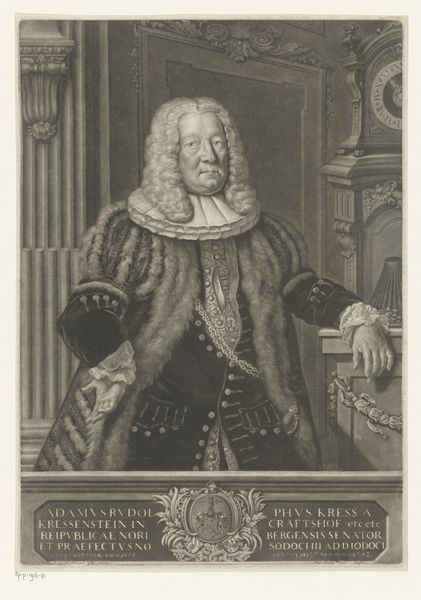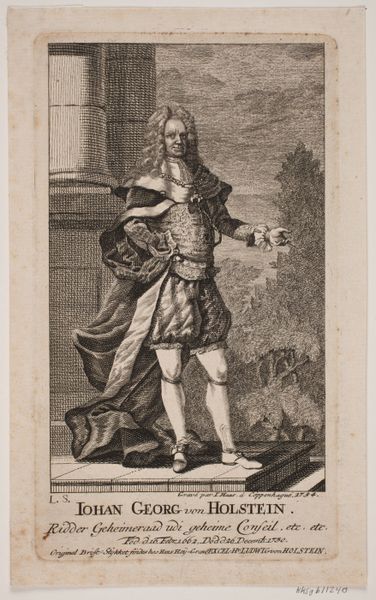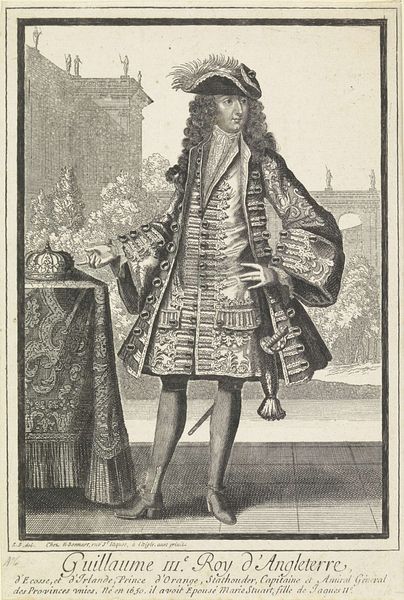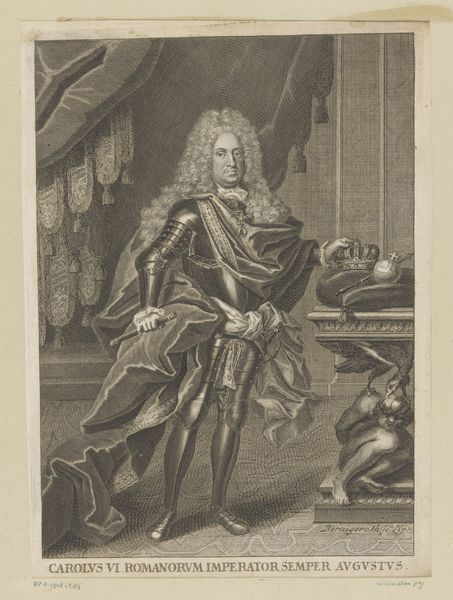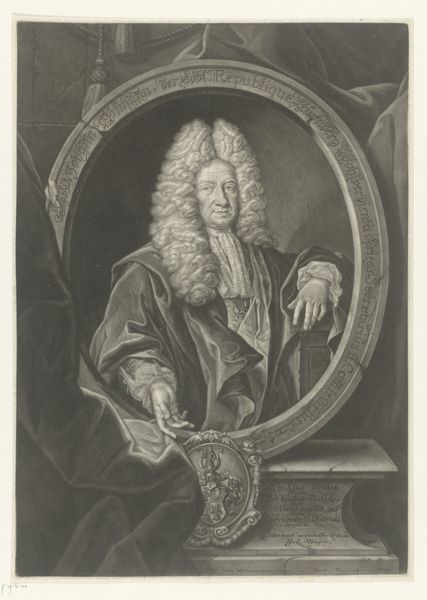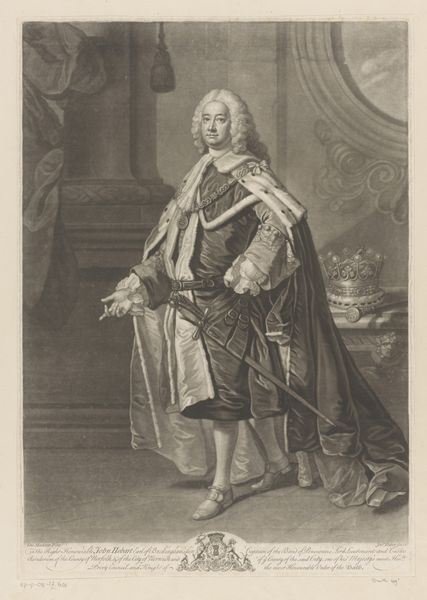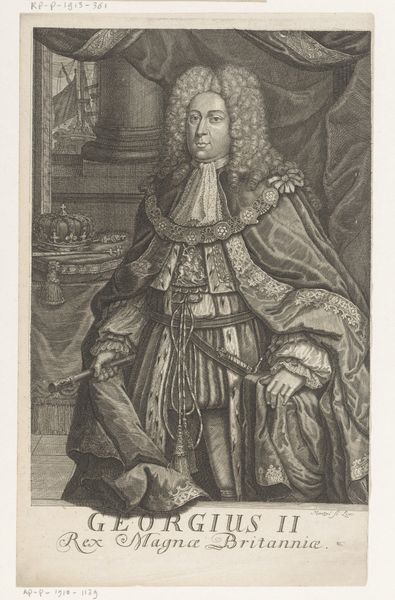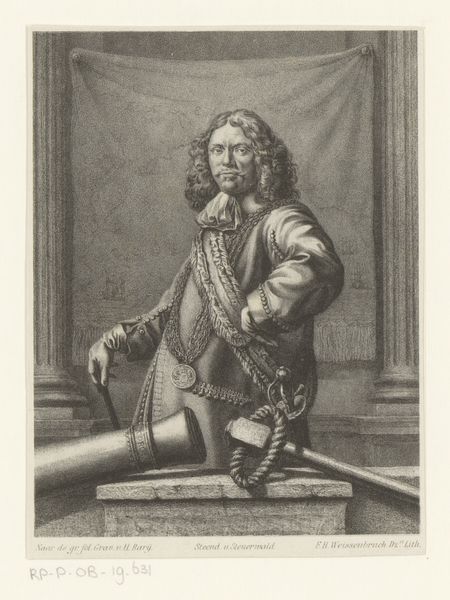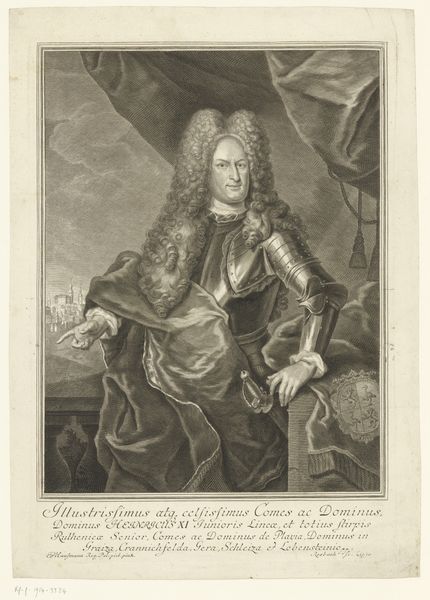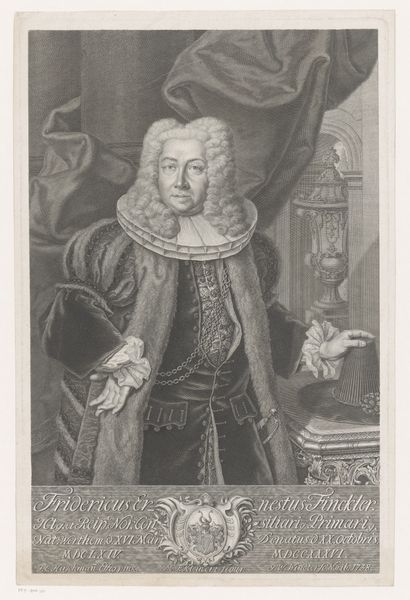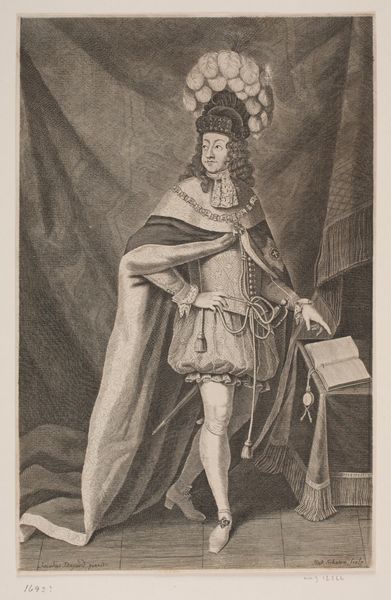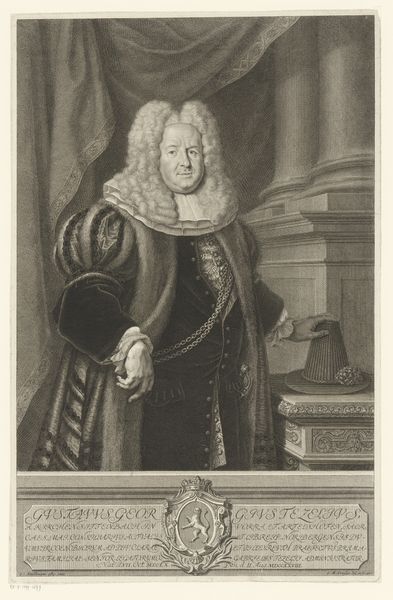
print, engraving
#
portrait
#
baroque
# print
#
unrealistic statue
#
limited contrast and shading
#
portrait drawing
#
history-painting
#
engraving
Dimensions: 328 mm (height) x 209 mm (width) (bladmaal)
Editor: This is "Overkammerjunker Adam Knuth," an engraving from 1693 by Hubert Schaten. I'm struck by how posed and staged the portrait feels. What do you make of this work? Curator: This engraving perfectly embodies the performative nature of power in the late 17th century. It's less about capturing Adam Knuth's likeness and more about projecting his status and adherence to societal expectations. Consider the details: the elaborate wig, the ornate clothing, and the carefully constructed backdrop. It's all meticulously designed to convey authority and belonging to the elite. Editor: So, it's about sending a message? What was the message meant for its audience? Curator: Precisely! The message would be multifaceted depending on who viewed it. For the aristocracy, it was about reinforcing the existing social order, solidifying their visual language. For the middle class, maybe it served as aspiration but simultaneously highlighted the unbreachable gap. Also, consider where such a print might be displayed and how it would function in that space. Is it trying to legitimize claims to authority? Editor: That makes a lot of sense. It's like social media, but with engravings. The presentation is carefully curated. Curator: An excellent analogy. In fact, think of how the rise of printmaking facilitated wider dissemination of these "curated" images and further codified social expectations. Where do you see this work fitting into larger trends of art history? Editor: I can see the Baroque influence through its ornamentation, yet it doesn’t seem as emotive or dramatic as other works of that period. Curator: A very astute observation. Think about this in relation to evolving attitudes towards authority and how this impacted society, not merely aesthetics. Editor: This portrait seems less about the individual and more about reinforcing societal hierarchy. It's like visual propaganda, in a way. Curator: I would argue it does perform a role akin to propaganda and solidifies an understanding of visual authority, using a language immediately ‘readable’ for its intended audience. Editor: It's been enlightening to think about the broader implications of something that seemed like just a fancy portrait at first glance. Thanks for your insight! Curator: The pleasure was mine. Remembering this context helps unlock historical value.
Comments
No comments
Be the first to comment and join the conversation on the ultimate creative platform.
